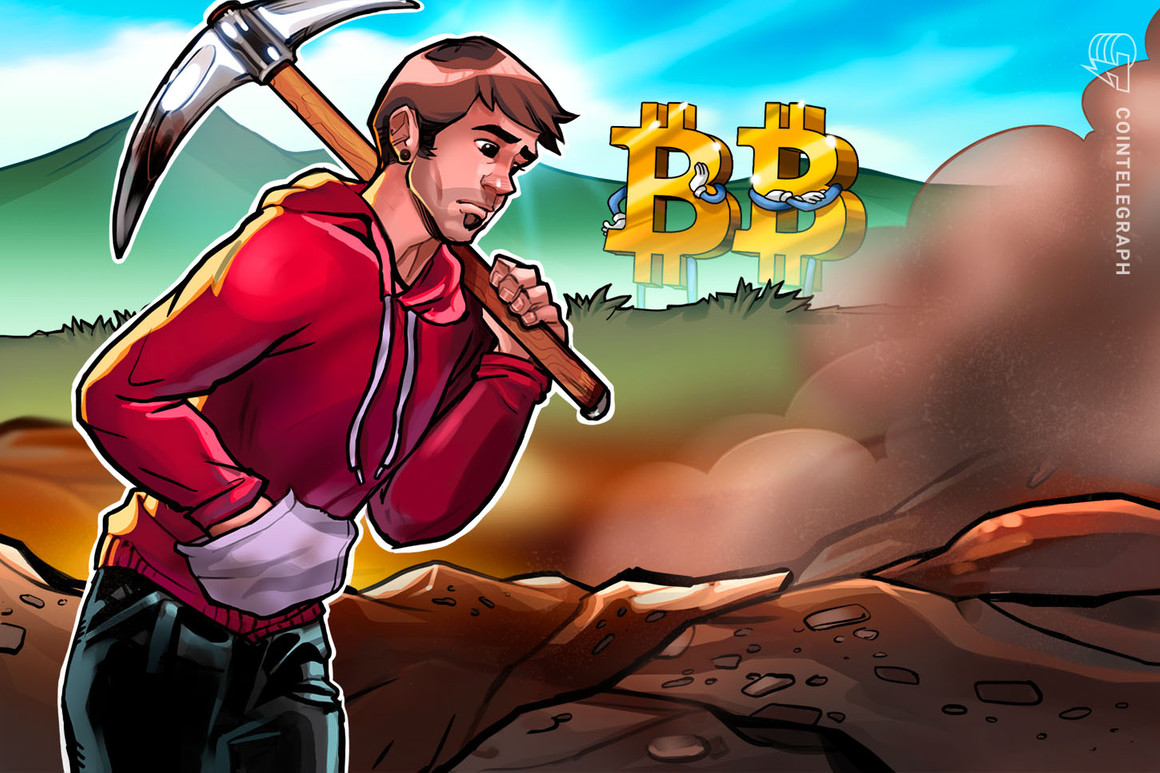Your favorite trader is saying Bitcoin (BTC) bottomed. At the same time, the top on-chain indicators and analysts are citing the current price range a

Your favorite trader is saying Bitcoin (BTC) bottomed. At the same time, the top on-chain indicators and analysts are citing the current price range as a “generational buy” opportunity. Meanwhile, various crypto and finance media recently reported that Bitcoin miners sending a mass of coins to exchanges are a sign that $17,600 was the capitulation move that pins the market bottom.
There’s so much assurity from various anon and doxed analysts on Crypto Twitter, yet Bitcoin price is still in a clear downtrend, and the metrics don’t fully reflect that traders are buying every dip.
A critical component of BTC price that many investors often overlook is the condition and sentiment of Bitcoin miners, which is exactly why Cointelegraph had a chat with Rich Ferolo of Blockware Solutions and Will Szamosszegi of Sazmining Inc. to gain clarity on what’s happening in the mining industry and how this might impact market sentiment going forward.
Cointelegraph: Is the bottom in for Bitcoin? The price touched $17,600 nearly two weeks ago and it’s starting to feel like the fund-driven capitulation armageddon might be over. Thoughts?
Will Szamosszegi: It’s impossible to say whether or not Bitcoin has hit a bottom. In general, I recommend a dollar-cost-averaging strategy to people: Just buy however much Bitcoin you feel comfortable with on a consistent schedule. We’ve seen drawdowns even bigger than this before — such as 93.7% in its early days and 83.4% in 2018. Bitcoin has always made gains over any four-year period in its history.
CT: Currently, Bitcoin is trading below the realized price and below miners’ cost of production. The price also dipped below the previous all-time high and the hash rate is dropping. Typically on-chain analysts pinpoint these metrics hitting extreme lows as a generational purchasing opportunity, but is it?
Rich Ferolo: Blockware has done a lot of research on this and we’ve calculated the breakeven price from machines as far back as the s9 from 2016, at $.07 per kilowatt, the breakeven is $38,000 for a s9. You’re going to see older machines coming off the network eventually. For the s17s, at $.07 cents per kilowatt, BTC needs to be at around $18,000.
Newish machines are more efficient and while difficulty and the hash rate adjustment are trending down for current generation machines, anything above 90 terahashes (TH/s) can make it. Anything below 34 watts per Terahash is inefficient.
One factor to consider is that the value of machines is going down. Even if BTC price starts to go up and there’s a symbiotic relationship between price and the macro factors impacting Bitcoin price and prices throughout the wider-crypto market.
Machines are hard assets and the big aspect of mining is the machine. Bitmain and MicroBT adjust prices as BTC price goes up. This is a hard asset that, in a way, earns yield on a daily basis, the same way that BTC does.
If you’re in the long game, you don’t care about the current price of BTC. Just because the BTC price goes down doesn’t mean all the miners will go down also. It’s more about survival of the fittest. You need to be aware of the macros, but it’s not as bad as one might think. There are different perspectives and situations depending on what size outfit you’re running. Big public companies have a lot of operational factors to consider, but their operational costs (OPEX) inflate their overall cost even if they get $.05 per kilowatt. Their model is different from the analytics of the average miner outside of the public user.
CT: What is the state of the BTC mining industry right now? There are rumors that leveraged miners could go under, inefficient miners are turning off and equipment is being sold 50% to 65% lower than 2020 to 2021 prices.
What’s happening behind the scenes and how do you see this impacting the industry for the next six months to a year?
RF: I agree with all of your observations. We’re at a price consolidation point currently and the market is cleaning up the amount of mining debt that exists. If you can hang on and keep mining, it might keep the hash rate and difficulty at bay. Blockworks believes that there is a severe lack of infrastructure in the space. To have infrastructure, you have to have an incredible amount of CAPEX to get going. There’s been and still is a lack of infrastructure.
Regardless of the machines that are there, there’s not a lot of space for hosting. From the broader standpoint, you’re going to see a lot of capitulation, insolvency and excess machines. I know a lot of the big players are putting a pause on funding for miners. That’s a plus for people wanting to get in the space, but we predicted a 60% hash rate increase in 2022 when things were booming. And, as the s19XPs come into light, the hashrate will go up.
WS: Many veterans in this space have grown accustomed to these cycles in the Bitcoin ecosystem. Historically, you see the hashrate decline following the price…
cointelegraph.com
